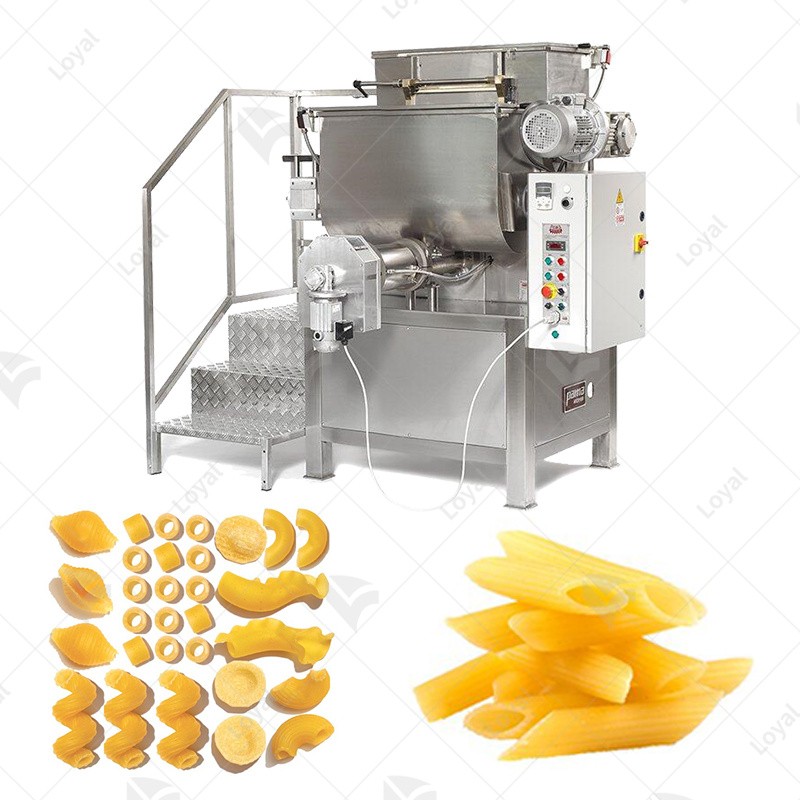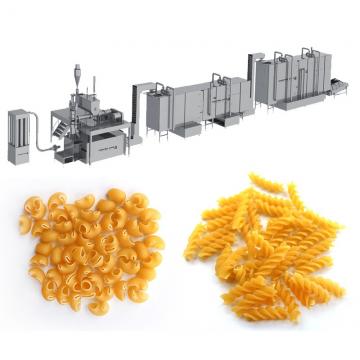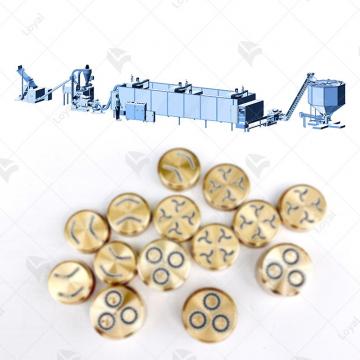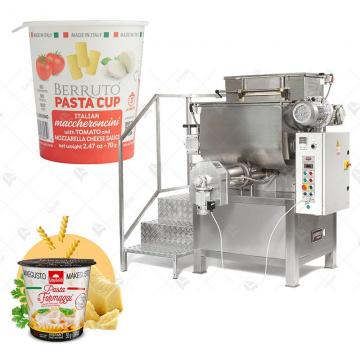The Ultimate Guide To Manufacturing Shortcut Systems for Efficient and Energy-Saving Pasta Production In 2024
The Ultimate Guide To Manufacturing Shortcut Systems for Efficient and Energy-Saving Pasta Production In 2024
Fully Automated Manufacturing Shortcut Systems represent a groundbreaking advancement in the realm of food machinery, specifically tailored for efficient and energy-saving macaroni mking machine line. In today's fast-paced world, where demand for quality pasta is soaring, the integration of cutting-edge technologies becomes imperative. This introduction sets the stage for exploring the intricate details of these systems, addressing pasta production challenges, and highlighting the pivotal role of efficiency and energy savings in modern manufacturing.Shandong Loyal Industrial Co., Ltd. has incorporated advanced technologies from Buhler and Gidamak in the production of its macaroni.
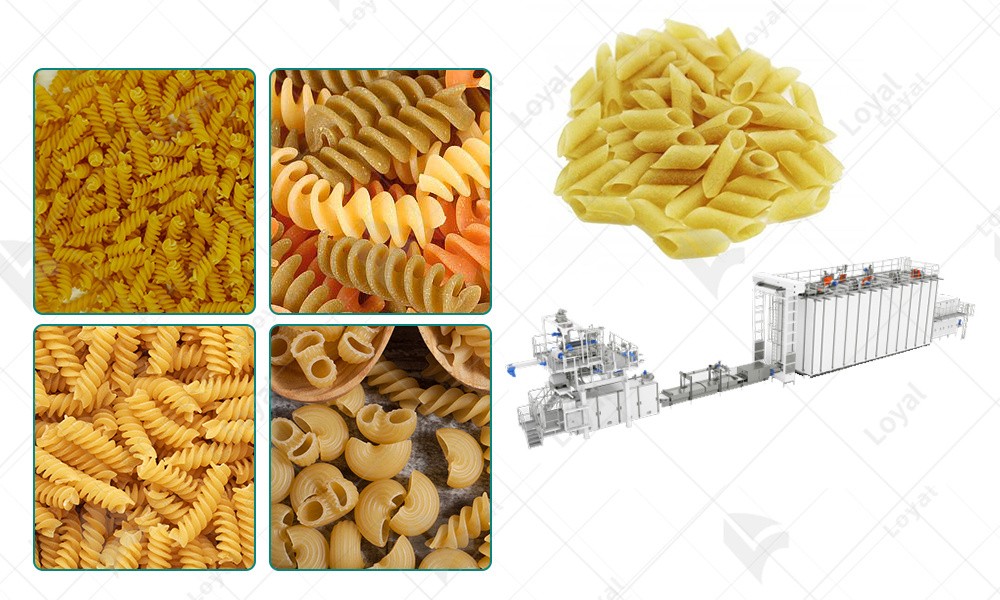
Understanding Manufacturing Shortcuts
Manufacturing shortcuts, within the context of pasta production, refer to innovative techniques that streamline processes without compromising product quality. Leveraging technology is at the core of implementing these shortcuts, enhancing the entire production chain. Boldly embracing these techniques brings forth a multitude of benefits in pasta production. From expedited processing to resource optimization, the adoption of manufacturing shortcuts is a game-changer.
Components of Fully Automated Systems
To delve deeper, let's explore the components of fully automated systems revolutionizing pasta manufacturing. An overview of automated machinery reveals a sophisticated array of equipment, intricately designed to handle various stages of production. The integration of cutting-edge technologies, including robotics and artificial intelligence, enhances precision and speed. Software systems play a pivotal role in ensuring seamless and streamlined operations, orchestrating the intricate dance of machinery with finesse.
Energy-Saving Techniques
Efficiency in pasta production extends beyond speed; it encompasses sustainable practices. This section delves into energy-saving techniques that form the backbone of fully automated systems. From harnessing sustainable energy sources to meticulous optimization of energy consumption, manufacturers are making strides in reducing their environmental footprint. Environmental impact considerations become central as the industry aligns with eco-friendly practices.
Case Studies
Real-world success stories underscore the transformative impact of fully automated systems. Examining instances where manufacturers embraced these innovations reveals tangible outcomes—increased efficiency, significant cost savings, and positive user experiences. Recognizable brands such as Barilla, De Cecco, Creamette, San Giorgio, and Great Value have witnessed the benefits firsthand, solidifying the credibility of these systems in the competitive pasta market.

Challenges and Solutions
No revolution is without its challenges. Identifying potential hurdles in implementing automated systems is crucial. This section explores innovative solutions to overcome challenges, ensuring a smooth transition to fully automated manufacturing. Continuous improvement strategies, informed by lessons learned, pave the way for an industry that constantly evolves and refines its processes.
Future Trends
Peering into the future, emerging technologies promise further advancements in pasta manufacturing. Anticipated developments in automated systems hint at even greater efficiency and sustainability. This section explores the evolution of energy-saving practices, providing a glimpse into the trajectory of the industry.
FAQs: Common Questions about Manufacturing Shortcuts
1. What are manufacturing shortcuts, and how do they apply to pasta production?
Manufacturing shortcuts refer to innovative techniques designed to streamline production processes without compromising quality. In the context of pasta production, these shortcuts leverage advanced technologies to enhance efficiency and reduce resource consumption, ultimately leading to a more sustainable and cost-effective manufacturing process.
2. How do fully automated systems contribute to pasta production efficiency?
Fully automated systems integrate cutting-edge machinery, software, and technologies to optimize various stages of pasta production. By automating tasks such as mixing, shaping, and packaging, these systems significantly increase efficiency, reduce production time, and enhance overall output quality.
3. What role does technology play in implementing manufacturing shortcuts?
Technology plays a central role in implementing manufacturing shortcuts, especially in the automation of pasta production. Robotics, artificial intelligence, and advanced software systems work in tandem to orchestrate a seamless and precise manufacturing process. This integration ensures consistent quality and reliability in the production of pasta.
4. How do manufacturing shortcuts contribute to energy savings in pasta production?
Energy-saving techniques within fully automated systems involve the use of sustainable energy sources and the optimization of energy consumption. By harnessing renewable energy and employing smart energy management practices, manufacturers can reduce their environmental impact and contribute to a more sustainable pasta production industry.
5. Can you provide examples of successful implementations of fully automated systems in pasta manufacturing?
Certainly. Recognizable brands such as Barilla, De Cecco, Creamette, San Giorgio, and Great Value have successfully embraced fully automated systems. These implementations have resulted in increased efficiency, significant cost savings, and positive user experiences, solidifying the credibility and success of manufacturing shortcuts in the competitive pasta market.
6. What challenges may arise when implementing fully automated manufacturing systems?
While the benefits are substantial, challenges may include initial setup costs, technological learning curves, and potential resistance to change. However, innovative solutions, continuous improvement strategies, and a commitment to overcoming hurdles ensure a successful transition to fully automated pasta manufacturing.
7. How do emerging technologies influence the future of pasta manufacturing?
Emerging technologies in pasta manufacturing, such as advancements in robotics, data analytics, and smart manufacturing, point towards an exciting future. Anticipated developments in automated systems promise even greater efficiency, sustainability, and adaptability to changing market demands.
8. Are there environmental considerations in the adoption of manufacturing shortcuts?
Absolutely. The manufacturing shortcuts discussed prioritize environmental considerations. Sustainable energy sources, optimization of energy consumption, and a commitment to eco-friendly practices align with the industry's growing focus on reducing its environmental footprint.

Conclusion
In conclusion, the journey through fully automated manufacturing shortcut systems has been nothing short of revolutionary. We've defined the concept, addressed challenges, celebrated successes, and glimpsed into the future. As we recap the benefits and advancements, it becomes evident that encouraging the adoption of manufacturing shortcuts is not just a choice; it's a necessity for the future of pasta production. In the final thoughts, we contemplate the trajectory of the industry, driven by innovation and a commitment to efficiency and sustainability. The pasta production landscape has been forever transformed, and the future is promising.

